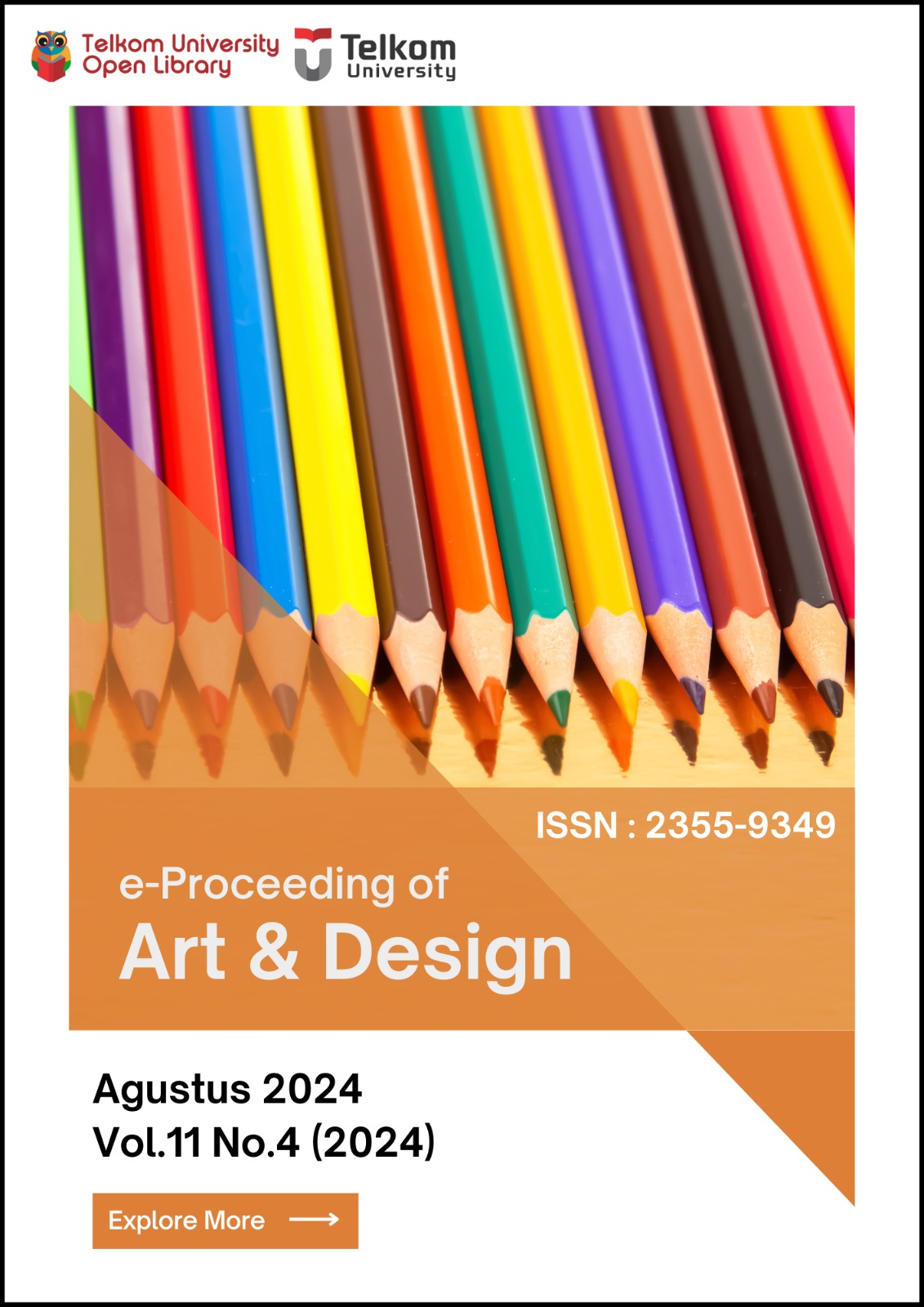REDESIGN KANTOR PT. IKAPHARMINDO PUTRAMAS TBK. DENGAN PENDEKATAN PSIKOLOGI RUANG
Abstrak
PT. Ikapharmindo Putramas Tbk. merupakan sebuah perusahaan farmasimultinasional. Penelitian ini membahas mengenai perancangan ulang kantor PT.
Ikapharmindo Putramas Tbk. dengan pendekatan psikologi ruang untuk meningkatkandedikasi, kreativitas, produktivitas, dan kesejahteraan karyawan. Masalah yang
ditemukan dalam penelitian ini terkait lingkungan kerja, seperti pencahayaan yang tidakmemadai, tata letak yang tidak terorganisir, susana ruang kerja yang monoton, dan
penyimpnan barang yang tidak teratur. Penelitian ini bertujuan untuk merancang tataletak ruang agar lebih terorganisir, mengurangi stres karyawan melalui variasi warna dan
bentuk, memperbaiki pencahayaan sesuai standar, dan menyediakan furniture khususuntuk penyimpanan. Metode pengumpulan data yang digunakan adaalah kualitatif
meliputi wawancara, observasi, dokumentasi, dan analisis data sekunder. Hasil dariperancangan ulang ini diharapkan dapat menciptakan lingkungan kerja yang dapat
mendukung kesejahteraan karyawan, membuat karyawan agar lebih produktif, danmemberikan referensi bagi perusahaan dalam memaksimalkan desain interior ruang kerja.
Kata kunci: kantor, PT. Ikapharmindo Putramas Tbk., psikologi ruang.
Referensi
Ardini, E. N., & Sarihati, T. (2018). PENGARUH WARNA PADA ELEMEN INTERIOR
RUANG TUNGGU RUMAH SAKIT IBU DAN ANAK TERHADAP PSIKOLOGIS
PENGUNJUNG (Studi Kasus Rumah Sakit Ibu dan Anak Melinda Bandung).
Idealog: Ide Dan Dialog Desain Indonesia, 2(3), 330.
https://doi.org/10.25124/idealog.v2i3.1235
ANGGRIANI, D. A. N. (2021). Buku Ajar interior: Azas Lingkungan Dalam.
Ching, F. D. K. (2012). Architecture: Form, space, and order. John Wiley & Sons.
Daulay, D. A., Silalahi, M., Sisca, S., & Dharma, E. (2019). PENGARUH TATA LETAK
DAN PEGAWASAN TERHADAP KINERJA PEGAWAI PADA PT BANK SUMUT
CABANG SYARIAH PEMATANGSIANTAR. Maker: Jurnal Manajemen, 5(2),
–35. https://doi.org/10.37403/maker.v5i2.116
Dellinger, S. (1989). Psycho-geometrics: How to use geometric psychology to
influence people. Simon & Schuster.
Designer9s guide to color. (1984). Chronicle Books (CA).
Gordon, G. (2015). Interior lighting for designers. John Wiley & Sons.
Hendraningsih, Dkk. (1982). Peran, kesan dan pesan bentuk-bentuk arsitektur.
Djambatan.
Kurniawan, K. R., Perdana, A. B., & Widiastuti, I. (2024). The loss of Austronesian
saddle roof in the vernacular architecture of Java, Indonesia. International
Society for the Study of Vernacular Settlements, 11(2), 582–602.
https://doi.org/10.61275/isvsej-2024-11-02-36
Panero, J., & Zelnik, M. (2014). Human dimension and interior space: A source book
of design reference standards. Watson-Guptill.
Prasetya, R. D. (2012). PENGARUH KOMPOSISI WARNA PADA RUANG KERJA
TERHADAP STRES KERJA. LINTAS RUANG: Jurnal Pengetahuan &
Perancangan Desain Interior, 1(1). https://doi.org/10.24821/lintas.v1i1.13
Riley, S. (2018). Mindful design: How and why to make design decisions for the
good of those using your product. Apress.
Simonds, J. O., & Starke, B. (2010). Landscape Architecture, Fourth Edition.
McGraw Hill Professional.
Wismoyo, E. A., & Hadiansyah, M. A. (2022). Form and function of graphic
illustration in interior design (Artotel Thamrin Jakarta as case studies). In
Embracing the Future: Creative Industries for Environment and Advanced
Society 5.0 in a Post-Pandemic Era (pp. 215–219). Routledge.
http://dx.doi.org/10.1201/9781003263135-43
Widyakusuma, A, (2020). 8Dampak Elemen Interior Terhadap Psikologis dan
Perilaku Pengguna Ruang






